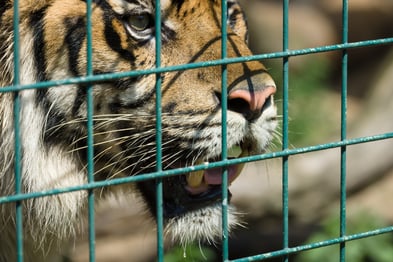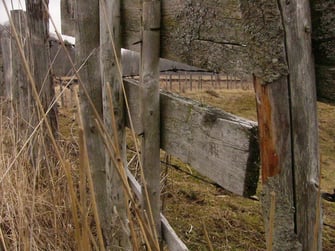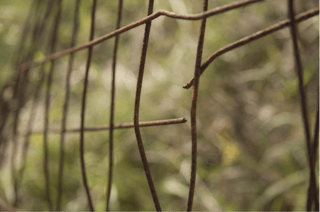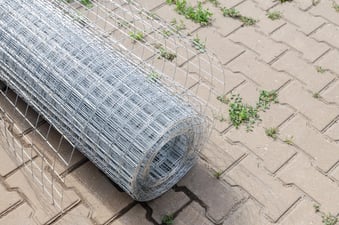Do You Have a fence that's begging for attention?
Spring is a great time to prepare your fence for the warmer months. Winter can be tough on fences. Trees fall down. Branches take out fence sections. The land freezes and defrosts, making your fence unstable. By the time spring rolls around, your fence can end up rusty, misshapen or even on the ground. In fact, spring, summer, and fall are all good times to work on a fence.
Things to Watch Out For
Now is the time to inspect your fence. To begin an inspection, walk the perimeter of the fence and inspect it from bottom to top. You will want to pay special attention to where the fence meets the ground. Have any animals burrowed underneath your fence?
Plus you will want to make sure there is no rust. Fences that are constantly touching the ground tend to rust at a higher rate. Over time, you may notice that an entire section has rusted away at ground level.
An inspection should also involve shaking the fence. Is it securely in the ground? Have any of the fence posts become damaged or loose
In addition to making any notes for yourself about damage, rust or peeling, you will want to pull off any vegetation that may have grown on your fence. Although some people find ivy and other plants appealing when it is growing on fences, vegetation speeds up the decay of your fence.
Signs of damage, and some fixes--
Rust
Rust is the number one enemy of metal fences. Once rust sets in, you can never restore your fence 100% but you can maintain it for a long life. To repair your fence from rusting:
- Brush off rust with a steel brush
- Spray area with your favorite metal protective spray paint/coating
- Monitor fence area for any additional rust
Peeling Vinyl Coated Mesh

Vinyl coating helps to prolong the life of your fence but over time the vinyl starts to peel. To maintain a vinyl coated fence:
- Trim away excessive peeling vinyl
- Use 60 grit sandpaper to sand away the small piece and create a smooth finish
- Spray area with your favorite metal protective spray paint/coating
- Monitor fence area for any additional peeling and rust
Fence Section Smashed by a Fallen Tree or Tree Branch
Winter can be tough on trees and anything around your fence that can fall on it and damage the fence. To address a section of fence that has been destroyed we recommend:
- Replacing the section with a panel of the same or a similar type of fencing
- Using strand wire to thread together the broken sections
- Replacing or upgrading the fence
A Maintenance Supply List
We also recommend creating a fence maintenance supply list when you are first building a fence and annually give your fence a check-up. For the supply list, we recommend:
- Strand wire, fence staples, and hog rings
- Purchasing an extra 20%
of so you can some on hand for repairsfence - Reviewing warranties
- Including all your fencing needs in one order
To quickly summarize, check your fence for:
- Lack of sturdiness
- Fence post stability
- Weld strength
- Rust
- Vinyl peeling
- Vegetation
- Holes under the fence
You will want to fix or address any and all of the items on this list in preparation for warmer months ahead.
Louis E. Page is your single source for all your wire mesh requirements. We have strand wire, fence staples, hog rings and more in our catalog. It is up to you as to how many supplies you want to keep on hand to maintain a strong, sturdy fence. Some of our suppliers offer warranties, for example,
At Louis E. Page, we pride ourselves on our customer service and being able to meet your needs. Including all your fencing needs in one order can save you time and ensure you have everything you need when you need it. For example, you might already know that you need welded wire mesh for your animals but what about the crops you plan on planting?
Your plants need support and we have Hortonova - Crop Support Netting. This netting is rot and rust proof, resistant to UV rays and chemical agents. It is ideal for vertical and horizontal growing techniques. You can keep your animals where you want them, plus easily cultivate plants when you combine your ordering needs.
Place an order today by calling 1-800-225-0508 or emailing sales@louispage.com.
















